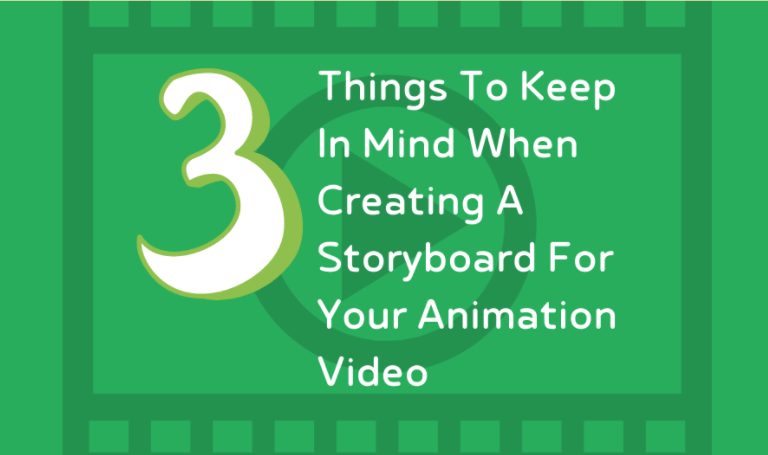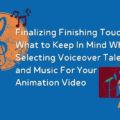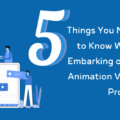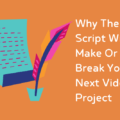You’ve heard of storyboarding before – it’s something TV and film writers do when mapping out their project. But even the shortest video project can benefit from storyboarding. Storyboarding helps you dial in your script, maximize visual and animation elements, and ensure that your production team has the information they need to deliver an exceptional product.
Here’s what to know about storyboarding.
1. A Storyboard is a Map
A storyboard is a visual outline of your script. It outlines your proposed video scene by scene, or in this case, drawing-by-drawing, including notes such as visual elements, special effects, transitions, voiceover and music additions. A storyboard helps you explain your idea to your stakeholders or production team so that others can understand your goals, vision, and intended narrative flow before beginning production.
A storyboard might look rough, but that’s on purpose. It’s not meant to be a polished final draft: it’s there to help you visualize and validate your idea, confirm whether your script works, and to see if there are any gaps, inconsistencies or tangents. It’s also an opportunity for your team to identify a production direction and flag any elements that might result in longer timelines or greater expenses.
Once your storyboard has been approved, your animation artists and production team can refer to it often – ensuring that your final product is aligned with your vision.
2. A Storyboard Helps You Tell a Story
A storyboard is a linear, visual interpretation of your animation video script that breaks down your story into bite-sized chunks. A good storyboard is one that tells a good story – but also tells it in a way that gets across the information or emotion that’s at the heart of your idea in a simple and easy-to-understand way.
Remember, your animation video is probably about 90 seconds long, so every drawing, line, and transition matters. Storyboarding helps you zoom out from your script and see it from a fresh perspective without distractions, while also giving you opportunities to ensure that you’re leveraging the visual format to the max. Because storyboards use a thumbnail-style visual approach, you can easily add, remove or move panels around to try out different ways of communicating your story. Unlike video editing, drafting, and redrafting a storyboard is simple – so keep working until you have the perfect basis for your animated video. That’s where we come in. Our specialty is helping you organize the storyboard and align the visual elements with the message you’re trying to share effectively. We serve as experts who specialize in seeing the big picture and making it happen. We did that within a few of our recent projects like the one below.
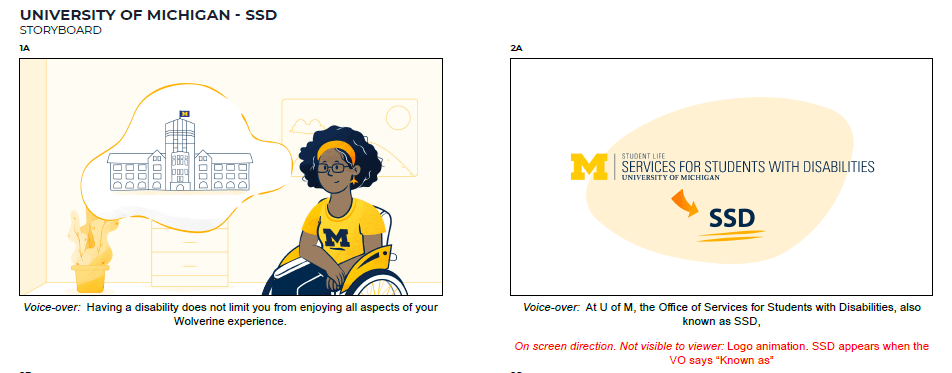
3. A Storyboard Isn’t Optional!
We understand the instinct to send your script straight to production, bypassing the storyboarding step. Your script is clear, and you’ve communicated your ideas to your production team, right? But adapting a text-based script into a video animation is an act of translation, and things do get lost in translation. A storyboard is a failsafe that not only ensures that you’re telling your story in the best possible way, but that your production company knows exactly what’s expected of them. It takes the guesswork out of the creative process.
Sure, creating a storyboard might take a little extra time upfront, but it’s time well spent. Without this critical visual roadmap, it’s easy for everyone to get lost in the weeds – and getting back on track can be time-consuming and costly. If your creative or production team wants to move ahead without a storyboard, be sure to hit the brakes, and introduce them to this concept first! It will save you a ton of time, headaches, and resources.
At See in Colors, we consult with clients throughout the animation video process including the storyboarding stage. We’ll make sure that you’re getting the most of your visual medium, while also effectively communicating your story and message.
Ready to storyboard your project? Talk to See in Colors to ensure that your video animation lands with impact.
Lisa
Latest posts by Lisa (see all)
- Unlock Your Meeting’s Potential – Visual Notetaking Tip Sheet - August 2, 2024
- Press Release: See In Colors Awarded Project Restore Grant to Expand Business Operations - March 15, 2023
- The When, Why, and How of Planning Your Staff Retreat - July 14, 2022

